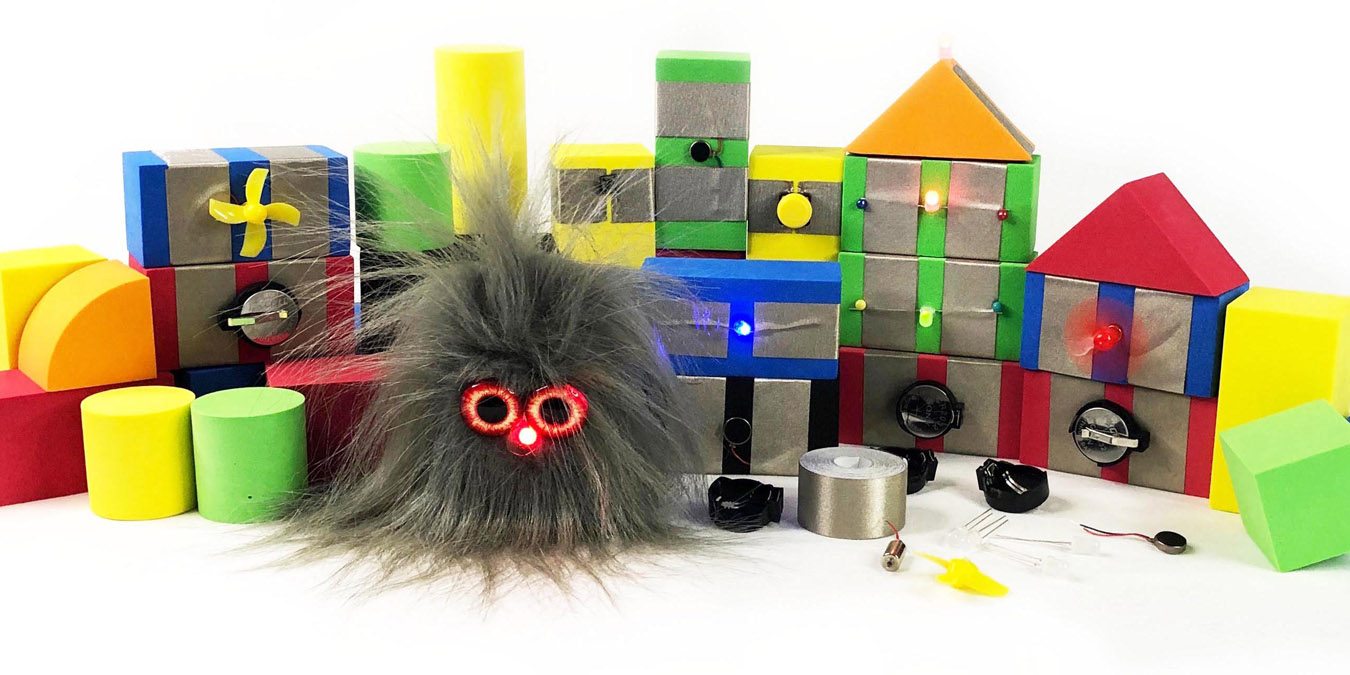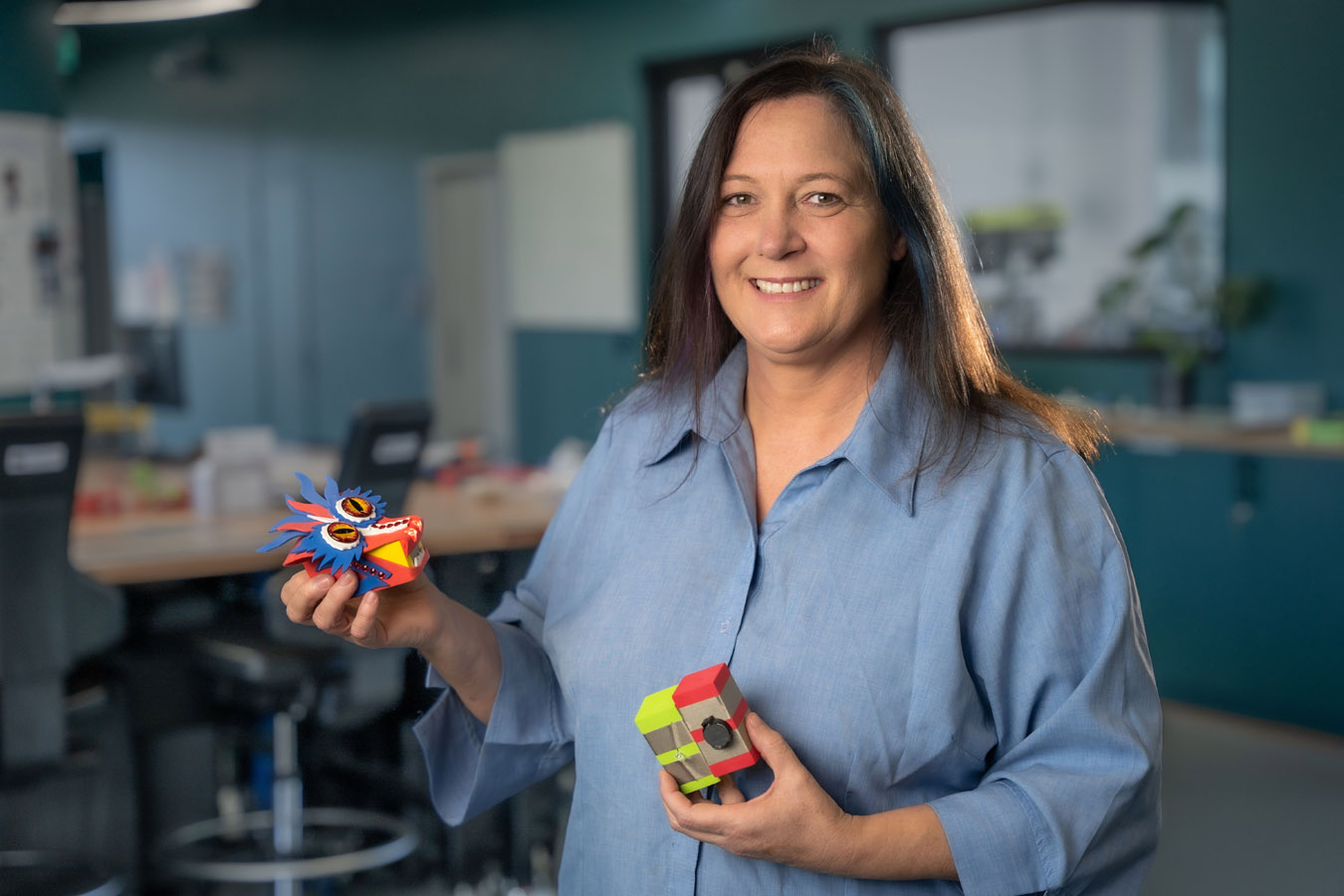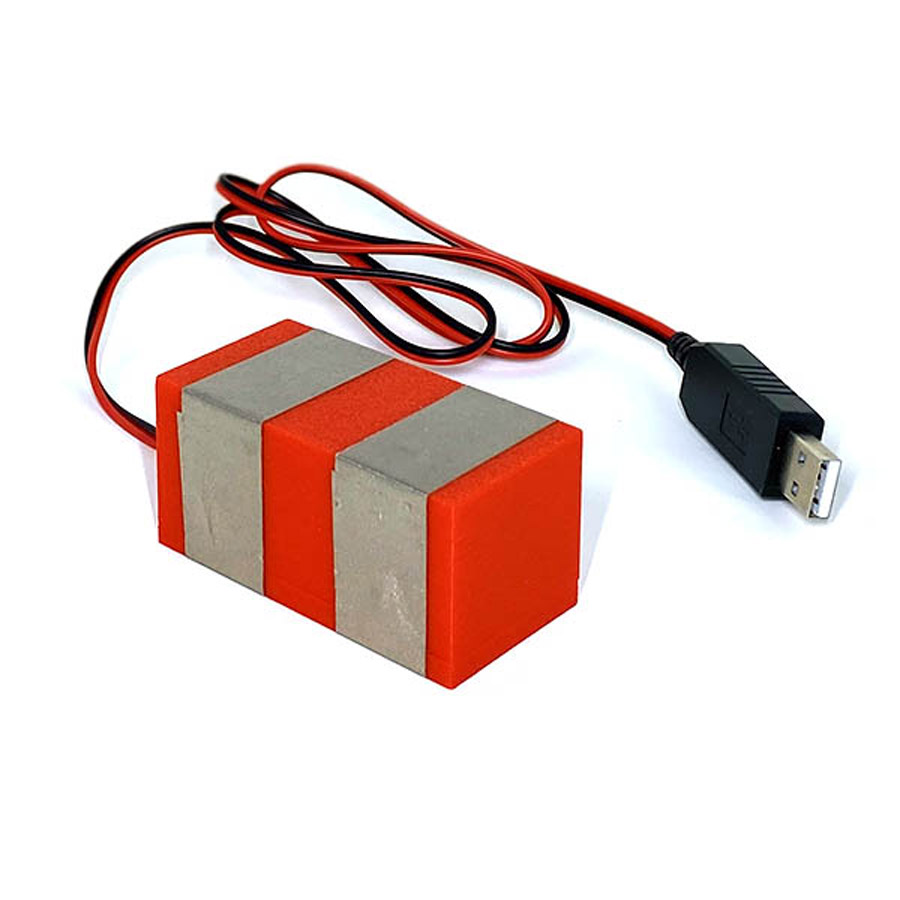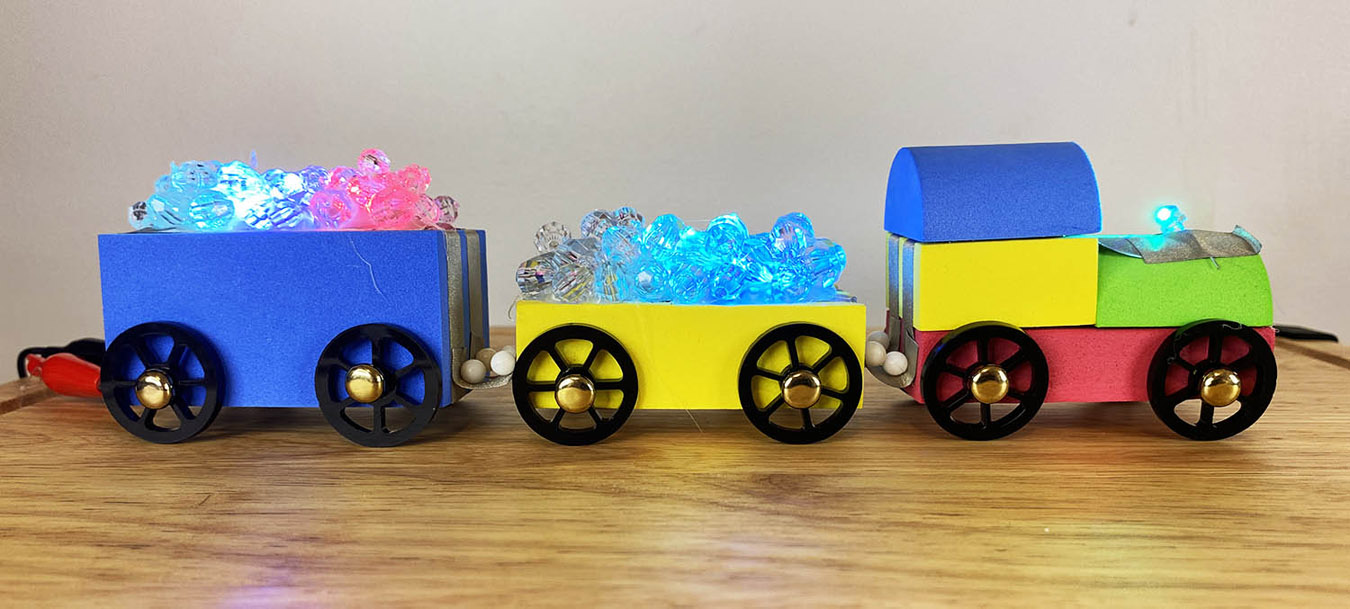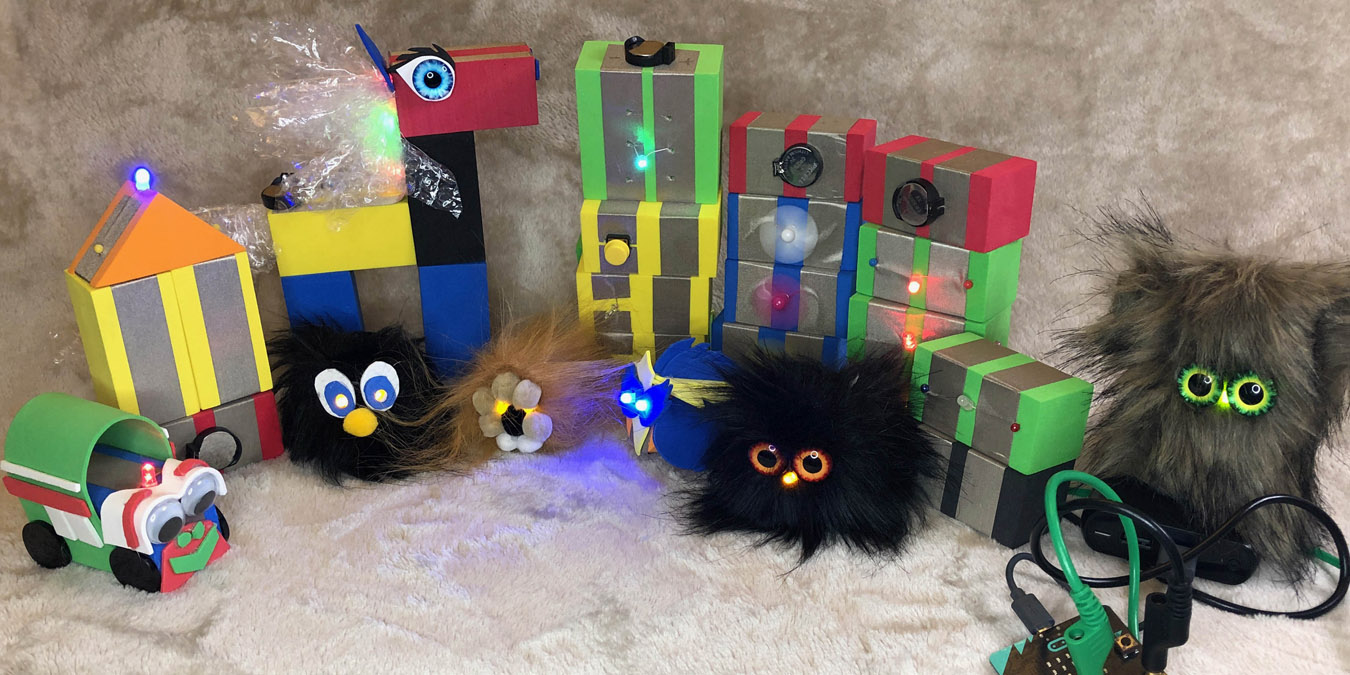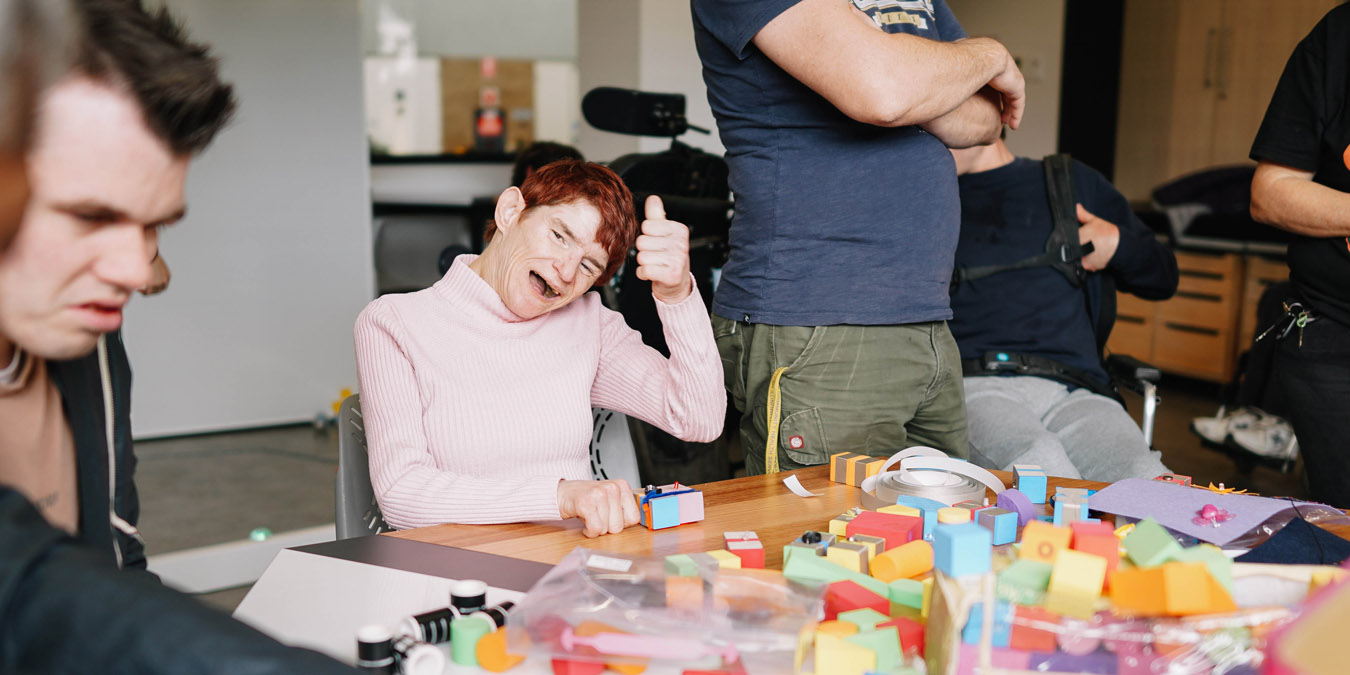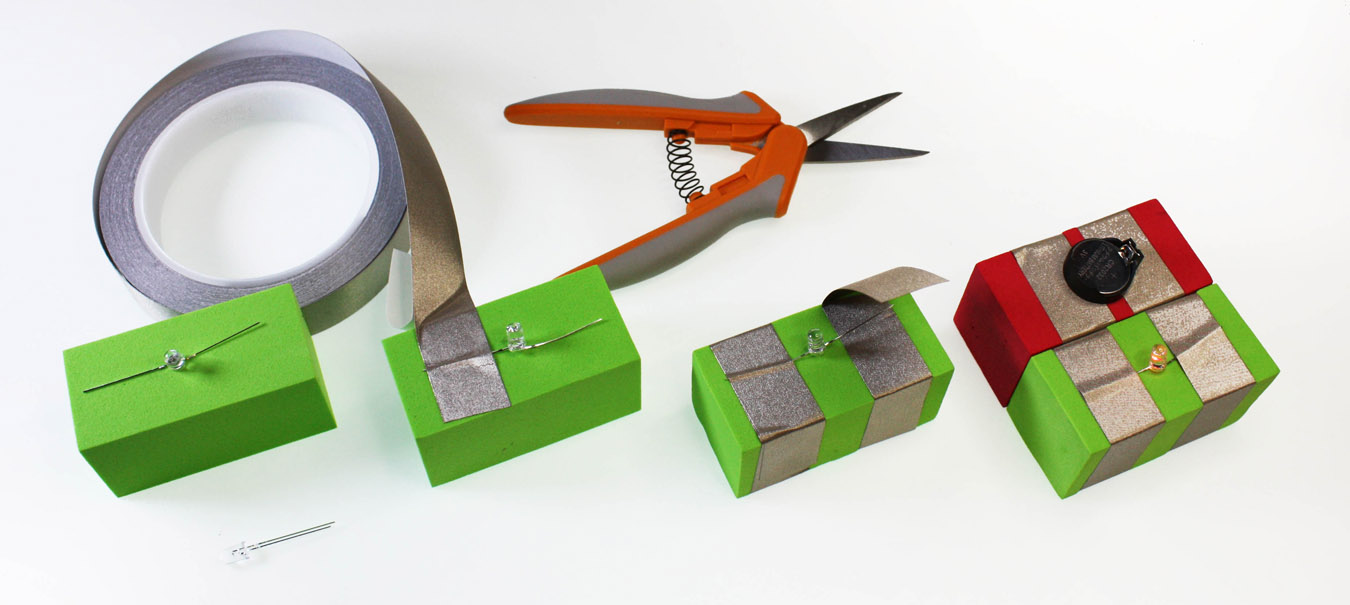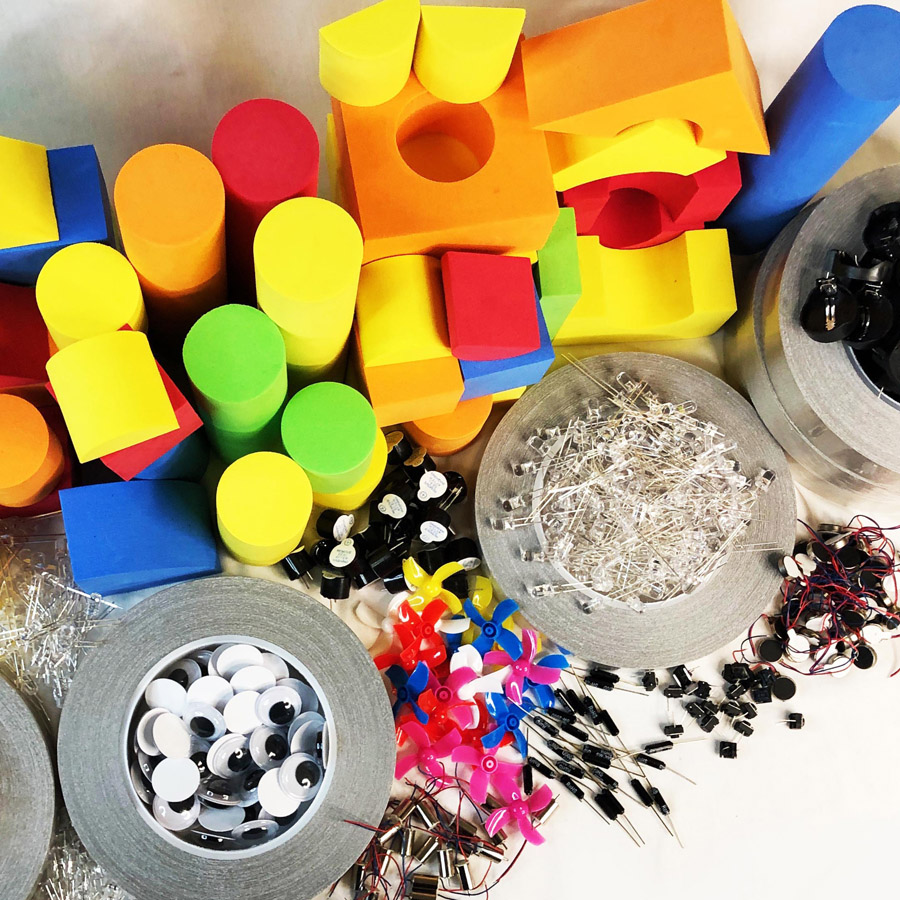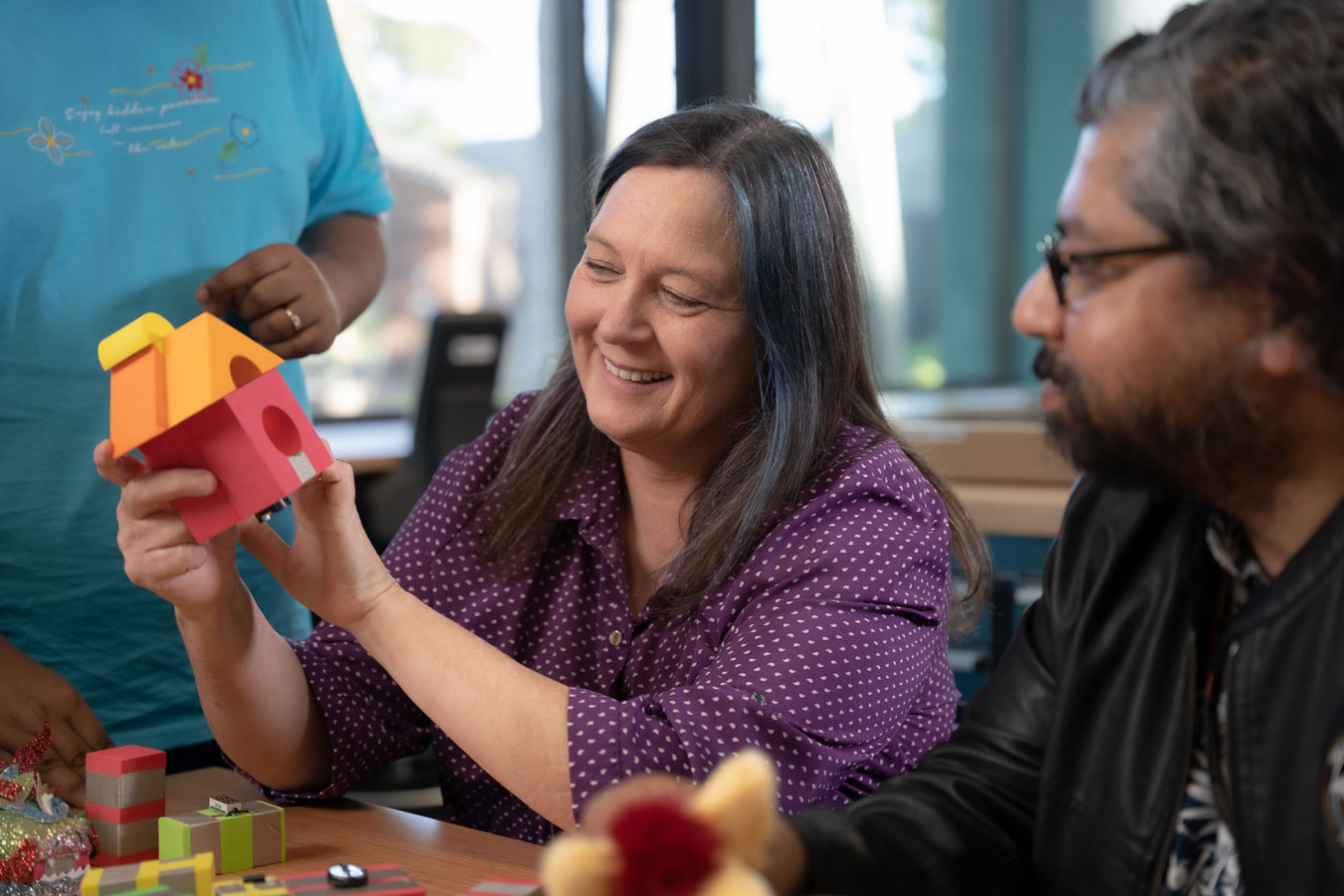The design strategy that was formed in response to the brief which revolved around four key pillars: 1. Design for accessibility as the priority, 2. Challenge how things have to be done, 3. Meet the needs of every individual so that no one is excluded, 4. Remove any identified barrier in the design for the next iteration.
The designer of TapeBlocks, Associate Professor Kirsten Ellis, has extensive experience in working with people with a range of people with disabilities in various contexts. She also has broad making skills with a high degree of technical knowledge and crafting skills used for both functional and creative purpose.
The design process was built on a foundation of curiosity which involved lots and lots of experimentation and failure. Various methods for connection were tried including clips, plugs, threads, hook and loop, magnets and snaps. In addition, experimentation in configurations were trialled to create connections such sewing, taping, creating jigsaws that interlocked, layering, and using gravity to complete circuits.
Once the basic form of the TapeBlock was established it was used at several workshop. The development continued with trialling different material for the blocks including wood, foam and laser cut pieces at various heights.
Introducing other components such as vibration motors made TapeBlocks accessible to blind and low vision participants. Components that could introduced other electronic concepts were also introduced into the TapeBlock range including tilt switches and buttons. Each time a group with a different accessibility requirement was identified a new version or component was designed to meet their needs. For example, big buttons provided control to participant with extremely limited mobility.
The other important aspect of the design was to make TapeBlocks relevant to people with disabilities by enabling the personalising of the blocks in creative ways such as characters and vehicles.

